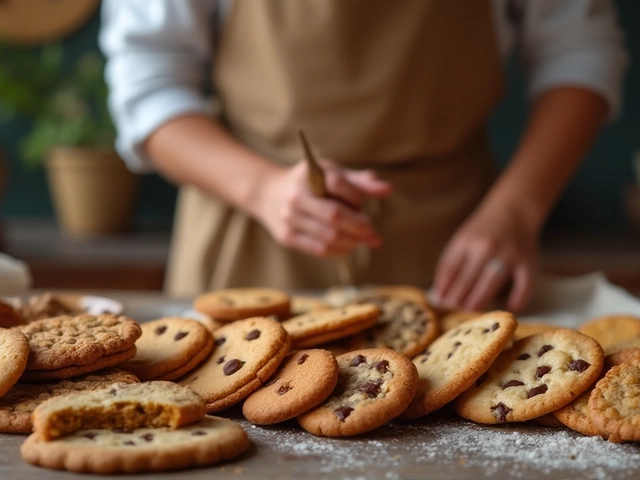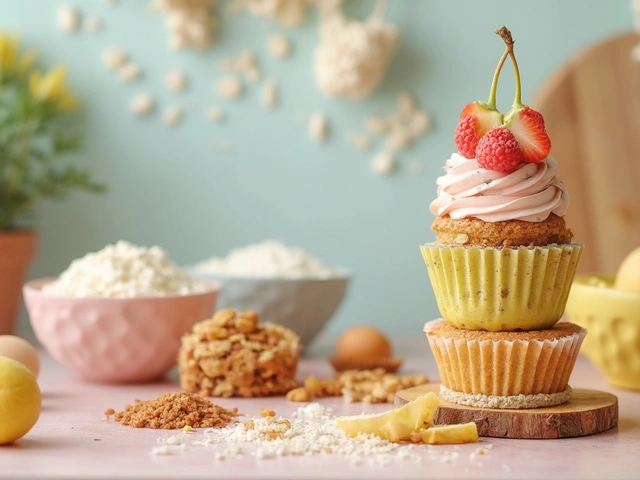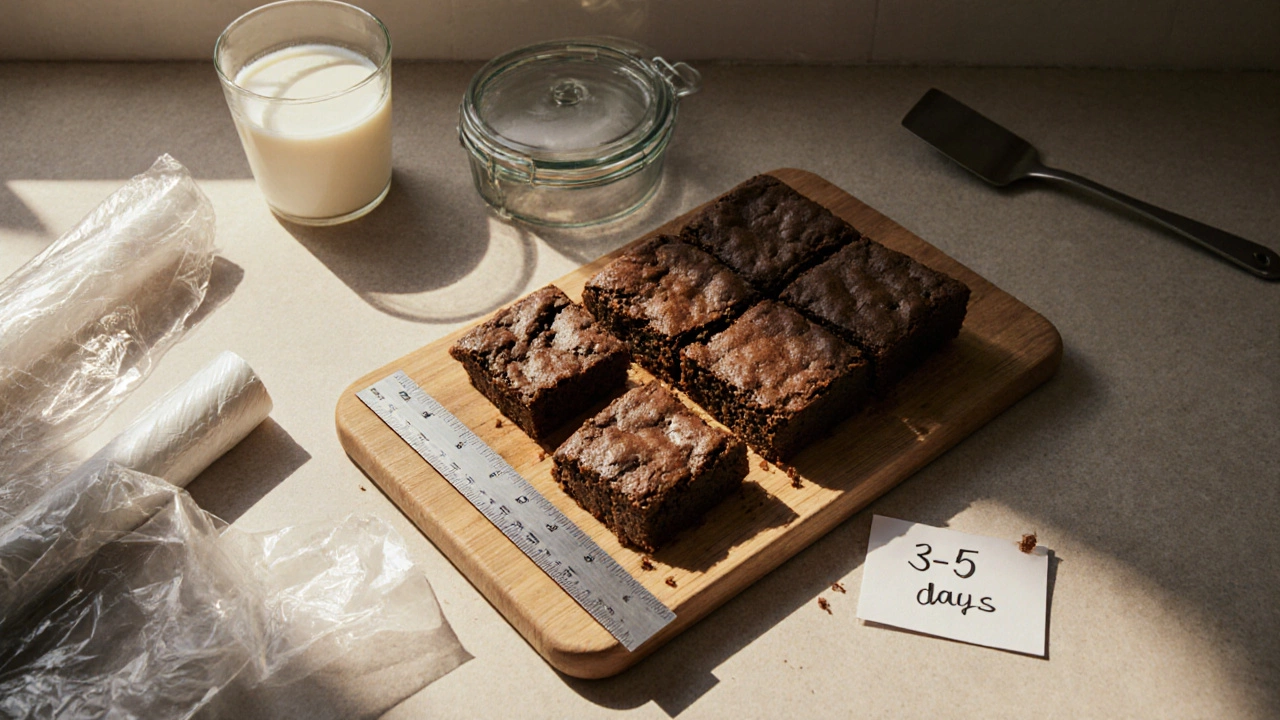
Brownie Shelf Life Calculator
Select Storage Method
Brownie Type
Packaging Quality
Estimated Freshness Duration
Select your storage options and click calculate
When it comes to baked treats, Brownies are a dense, chocolate‑rich bar that many bake for parties or a quick snack. But the joy can fade fast if you’re not sure how long they stay fresh. This guide breaks down the science, shows you realistic timelines for every storage method, and gives a handy checklist so you never bite into a stale piece again.
Quick Takeaways
- At room temperature, most brownies stay good for 3‑5 days.
- In the fridge, expect 1‑2 weeks of peak texture.
- Freezing can lock in freshness for up to 3 months.
- Wrap tightly with plastic wrap or foil, then store in an airtight container.
- Watch for sour smell, hard crust, or mold - signs they’ve gone bad.
What "Shelf Life" Really Means for Brownies
Shelf life is the period a food remains safe and pleasant to eat under specific conditions. For brownies, two main factors drive that clock:
- Moisture loss - dries out the crumb and makes the top crust overly firm.
- Microbial growth - especially when the batter contains eggs, butter, or dairy.
Chocolate itself is stable, but the surrounding ingredients create a delicate balance. Understanding how temperature, humidity, and packaging affect that balance lets you control the timeline.
How Long Do Brownies Last at Room Temperature?
Room temperature storage means keeping brownies in a cool, dry place-ideally 68‑72°F (20‑22°C). Under these conditions:
- Standard fudgy brownies stay fresh for 3‑5 days.
- Cake‑like brownies with less fat may dry out a bit sooner, around 2‑3 days.
- If you add perishable mix‑ins (cream cheese frosting, fresh fruit), cut the window to 1‑2 days.
The key is keeping them in an airtight container or wrapped tightly with plastic wrap. Even a small gap lets air dry the crumb and invites mold.
Refrigeration: Extending Freshness Without Freezing
Storing brownies in the fridge slows moisture loss and keeps bacterial growth in check. Place them in a sealed container to prevent them from soaking up fridge odors.
- Typical brownies keep well for 1‑2 weeks.
- The texture stays soft, but the outer crust can become slightly denser after 5‑7 days.
- Chocolate ganache or frosting can become glossy and a bit firm-still safe, just a texture shift.
If you plan to eat them within a week, refrigeration is a safe bet, especially for batches made with dairy‑rich fillings.
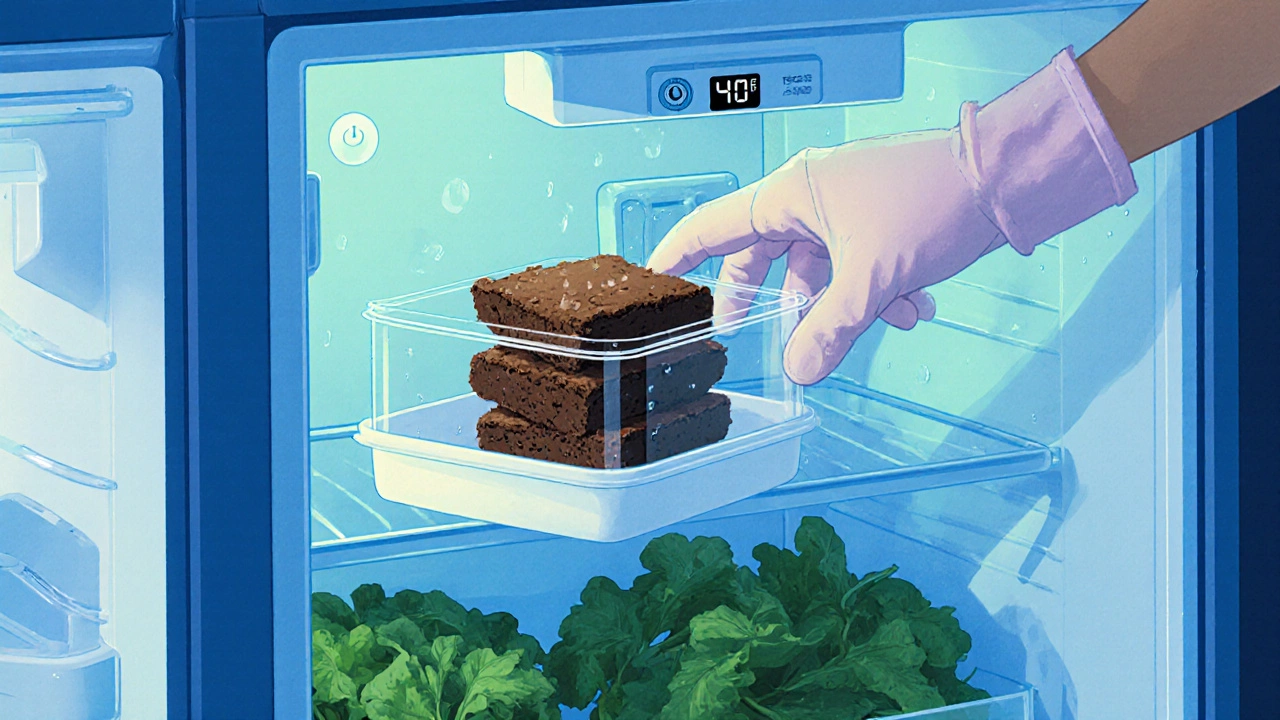
Freezing Brownies for Long‑Term Storage
Freezing essentially pauses the shelf‑life clock. Follow these steps for best results:
- Cool the brownies completely (room temp for at least 30 minutes).
- Cut into individual portions-this avoids repeated thaw cycles.
- Wrap each piece tightly in plastic wrap or aluminum foil.
- Place the wrapped pieces in a freezer‑grade airtight container or zip‑lock bag, removing as much air as possible.
When stored at 0°F (‑18°C) or lower, brownies maintain optimal flavor and texture for 2‑3 months. Beyond that, the chocolate can develop a faint “freezer burn” taste, and the crumb may become crumbly after thawing.
Proper Packaging: The Unsung Hero of Freshness
Whether you’re keeping brownies on the counter, in the fridge, or the freezer, packaging makes the difference. Here’s a quick guide:
- Plastic wrap: creates a moisture barrier, prevents air exposure. Ideal for short‑term storage.
- Aluminum foil: adds an extra layer of protection against freezer odors and light.
- Airtight containers: keep humidity stable, especially useful in the fridge where condensation can form.
- For extra security, double‑wrap: plastic wrap first, then foil, then container.
How to Tell If Your Brownies Have Gone Bad
Even with perfect storage, brownies will eventually cross the line. Look for these red flags:
- Off smell: sour, yeasty, or rancid aromas indicate microbial activity.
- Mold: any fuzzy growth, even on the surface, means discard.
- Hard crust: a rock‑hard top points to severe moisture loss.
- Stale taste: flat chocolate flavor, no longer rich or sweet.
When in doubt, err on the safe side-foodborne illness isn’t worth the last bite.
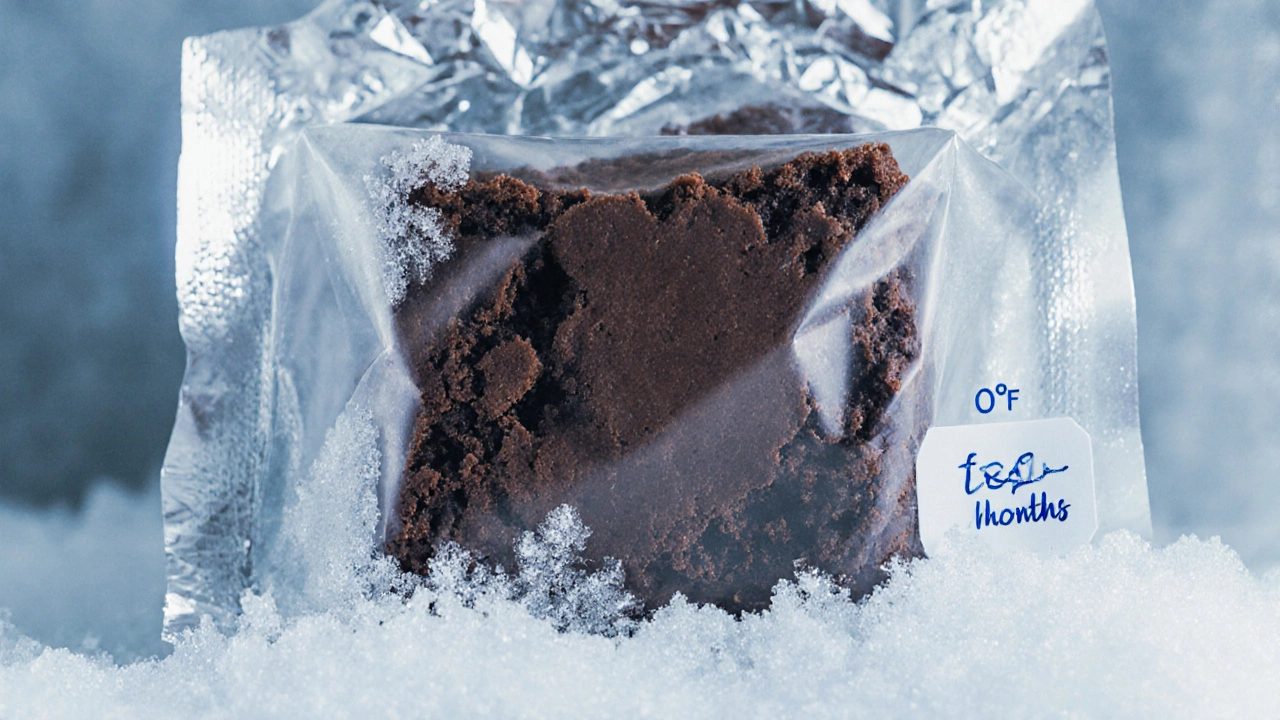
Comparison of Storage Methods
| Method | Typical Duration | Texture Change | Pros | Cons |
|---|---|---|---|---|
| Room temperature | 3‑5 days | Soft interior, crust may firm | Quick access, no energy use | Short shelf life, mold risk if humid |
| Refrigeration | 1‑2 weeks | Slightly denser crust, still moist | Extended freshness, minimal texture loss | Requires airtight container, can absorb odors |
| Freezing | 2‑3 months | Maintains original texture when thawed | Longest storage, good for bulk batches | Needs proper wrapping, risk of freezer burn |
Quick Checklist Before You Store
- Cool brownies completely before wrapping.
- Use a single layer of plastic wrap, then foil if freezing.
- Place wrapped pieces in an airtight container or zip‑lock bag.
- Label with date and storage method.
- Store in the coldest part of the fridge or freezer, not the door.
Frequently Asked Questions
Can I leave brownies out for a week?
No. Even at ideal room temperature, brownies start to dry out and can develop mold after 5‑7 days, especially if they contain dairy.
Do I need to re‑bake brownies that have been frozen?
Just thaw them in the refrigerator or at room temperature. If you prefer them warm, give them a quick 10‑minute heat in a 300°F oven-no need to bake from scratch.
Will adding nuts affect shelf life?
Nuts add oil that can go rancid over time. If you store brownies for more than a week, consider keeping nut‑free versions or freeze them.
Is it safe to eat brownies that smell a little sour?
A sour smell usually signals bacterial growth. Discard them to avoid food‑borne illness.
How should I re‑wrap brownies after I’ve opened a package?
Wrap the leftovers tightly in plastic wrap, then place them in an airtight container. This restores the moisture barrier lost when the original packaging was opened.

